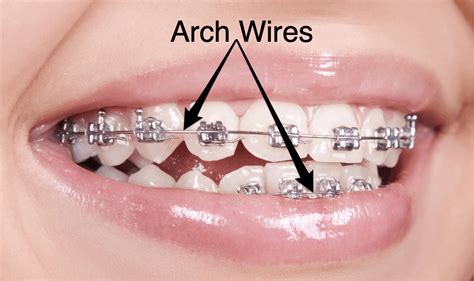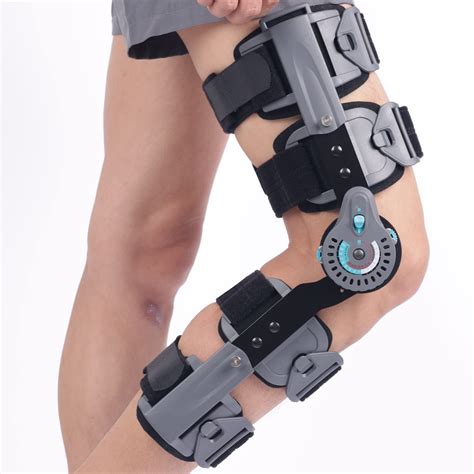doe all metal braces brackets need wire Metal braces usually need to be worn for two to three years, but this depends on the individual case. Your orthodontist will be able to give you a more accurate estimate of how long your child will need to wear their braces. There are four . HEIDIBEAR Wall Shelf Brackets for Wood or Composite Strong lode bearing to create a neat and tidy space . Shelf bracket is made of premium iron, formed by stamping and bending without welding. metal shelf bracket is shaped as L with 90 degree Angle, firm and stable with better bearing capacity. The surface is painted with black baking varnish .
0 · the final wire for braces
1 · orthopedic wire for braces
2 · how many wires for braces
3 · finishing wire for braces
4 · closing wire for braces
5 · braces wire diagram
6 · best wire for braces
7 · arch wire for braces
KOCH: Specialized machinery and systems for the furniture and woodworking industries. Sawing Drilling Milling/Routing Dowel insertion Ultrasonic Welding
the final wire for braces
custom metal fabrication near me columbia sc
orthopedic wire for braces
Brackets are actually used on both metal and clear braces, and both types of braces use brackets and wires the same way. But that doesn’t mean all orthodontic treatments are the same. In this comprehensive blog post, we’ll explore everything you need to know about the final wire for braces. We’ll delve into the different stages of braces, how often wires are changed, the role of hooks and rubber bands, the .Metal braces usually need to be worn for two to three years, but this depends on the individual case. Your orthodontist will be able to give you a more accurate estimate of how long your child will need to wear their braces. There are four .
Self-ligating braces straighten teeth with brackets and an archwire. They don't use colored rubber bands but employ specialized brackets that directly clip to the wire. This creates a discreet treatment, available in clear or metal brackets, with a .Koby Tie: A metal hook that is added to a bracket that does not have its own hook so that elastics can be placed. Wires: Arch wire that goes through the brace slot to help the teeth move. O . Metal braces are fixed braces that consist of metal brackets that attach to the front of your teeth and are connected with a metal wire. Fixed braces need to be put on and removed by a dentist or orthodontist, which is why they .

Not all brackets are the same. For example Speed brackets will control torque when used with a rectangular wire. All parts of braces work synergistically. Brackets alone do not move teeth. Bracket: Brackets are small rectangles that are cemented to each tooth, and they’re either made of metal or ceramic. The arch wire runs through each bracket, attaching through clips (self-ligating braces) or rubber bands.
custom metal fabrication jacksonville
The archwire is the thin metal wire that connects the brackets and a vital component of braces. Orthodontists use small bends in the wire to manipulate the direction of your teeth, applying gentle pressure to ensure proper placement . First, Damon™ braces use a patented slide mechanism to connect archwires to brackets, allowing the wire to move freely. Next, without the need for elastics or o-rings, Damon™ braces are more comfortable, have less . Brackets are actually used on both metal and clear braces, and both types of braces use brackets and wires the same way. But that doesn’t mean all orthodontic treatments are the same. In this comprehensive blog post, we’ll explore everything you need to know about the final wire for braces. We’ll delve into the different stages of braces, how often wires are changed, the role of hooks and rubber bands, the intensity of tightening, and more.

Metal braces usually need to be worn for two to three years, but this depends on the individual case. Your orthodontist will be able to give you a more accurate estimate of how long your child will need to wear their braces. There are four types of metal braces: traditional metal braces, ceramic braces, self-ligating braces, and mini metal braces.Self-ligating braces straighten teeth with brackets and an archwire. They don't use colored rubber bands but employ specialized brackets that directly clip to the wire. This creates a discreet treatment, available in clear or metal brackets, with a usually metal-colored wire.Koby Tie: A metal hook that is added to a bracket that does not have its own hook so that elastics can be placed. Wires: Arch wire that goes through the brace slot to help the teeth move. O-rings hold the wire in place.
Metal braces are fixed braces that consist of metal brackets that attach to the front of your teeth and are connected with a metal wire. Fixed braces need to be put on and removed by a dentist or orthodontist, which is why they are ‘fixed'.
Not all brackets are the same. For example Speed brackets will control torque when used with a rectangular wire. All parts of braces work synergistically. Brackets alone do not move teeth.
Bracket: Brackets are small rectangles that are cemented to each tooth, and they’re either made of metal or ceramic. The arch wire runs through each bracket, attaching through clips (self-ligating braces) or rubber bands.
The archwire is the thin metal wire that connects the brackets and a vital component of braces. Orthodontists use small bends in the wire to manipulate the direction of your teeth, applying gentle pressure to ensure proper placement throughout the treatment duration.
First, Damon™ braces use a patented slide mechanism to connect archwires to brackets, allowing the wire to move freely. Next, without the need for elastics or o-rings, Damon™ braces are more comfortable, have less friction and make maintaining good oral hygiene easier. Brackets are actually used on both metal and clear braces, and both types of braces use brackets and wires the same way. But that doesn’t mean all orthodontic treatments are the same. In this comprehensive blog post, we’ll explore everything you need to know about the final wire for braces. We’ll delve into the different stages of braces, how often wires are changed, the role of hooks and rubber bands, the intensity of tightening, and more.Metal braces usually need to be worn for two to three years, but this depends on the individual case. Your orthodontist will be able to give you a more accurate estimate of how long your child will need to wear their braces. There are four types of metal braces: traditional metal braces, ceramic braces, self-ligating braces, and mini metal braces.
Self-ligating braces straighten teeth with brackets and an archwire. They don't use colored rubber bands but employ specialized brackets that directly clip to the wire. This creates a discreet treatment, available in clear or metal brackets, with a usually metal-colored wire.
Koby Tie: A metal hook that is added to a bracket that does not have its own hook so that elastics can be placed. Wires: Arch wire that goes through the brace slot to help the teeth move. O-rings hold the wire in place. Metal braces are fixed braces that consist of metal brackets that attach to the front of your teeth and are connected with a metal wire. Fixed braces need to be put on and removed by a dentist or orthodontist, which is why they are ‘fixed'. Not all brackets are the same. For example Speed brackets will control torque when used with a rectangular wire. All parts of braces work synergistically. Brackets alone do not move teeth.
Bracket: Brackets are small rectangles that are cemented to each tooth, and they’re either made of metal or ceramic. The arch wire runs through each bracket, attaching through clips (self-ligating braces) or rubber bands.The archwire is the thin metal wire that connects the brackets and a vital component of braces. Orthodontists use small bends in the wire to manipulate the direction of your teeth, applying gentle pressure to ensure proper placement throughout the treatment duration.

Protolabs specialises in digital manufacturing services, such as prototyping and production, offering injection molding, CNC machining, 3D printing, and sheet metal fabrication. They support remote and hybrid work, with many positions based in Amsterdam.
doe all metal braces brackets need wire|braces wire diagram